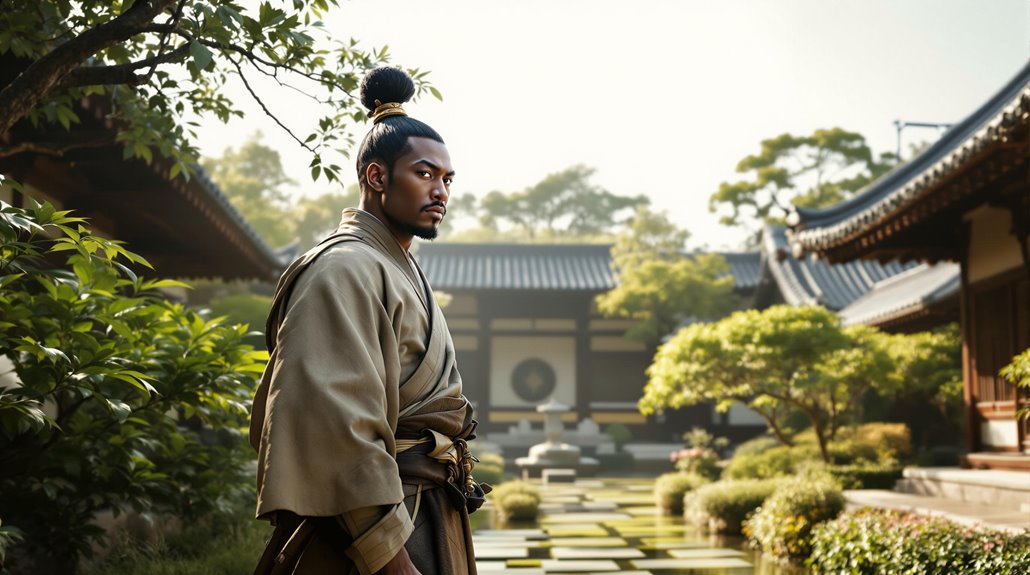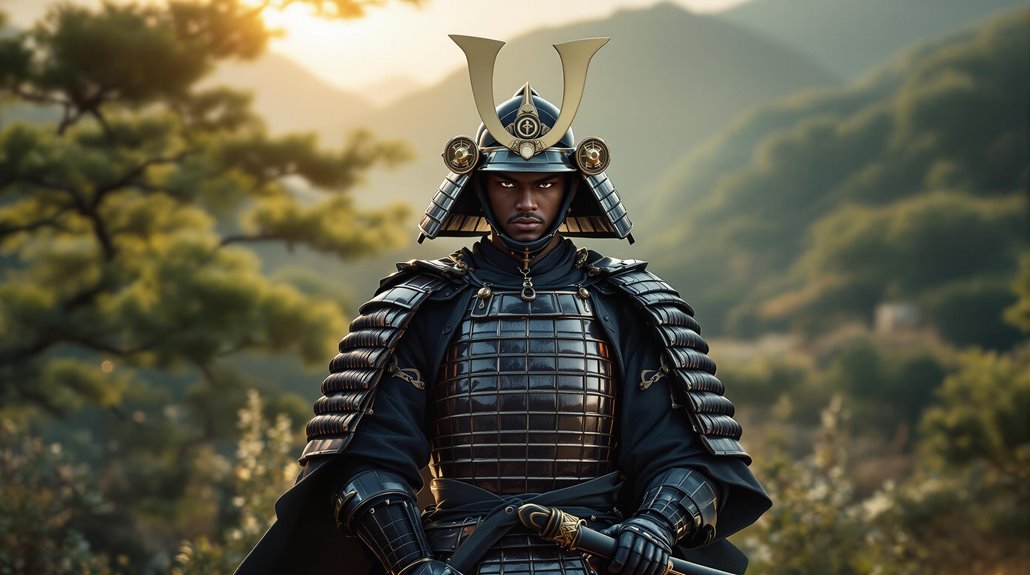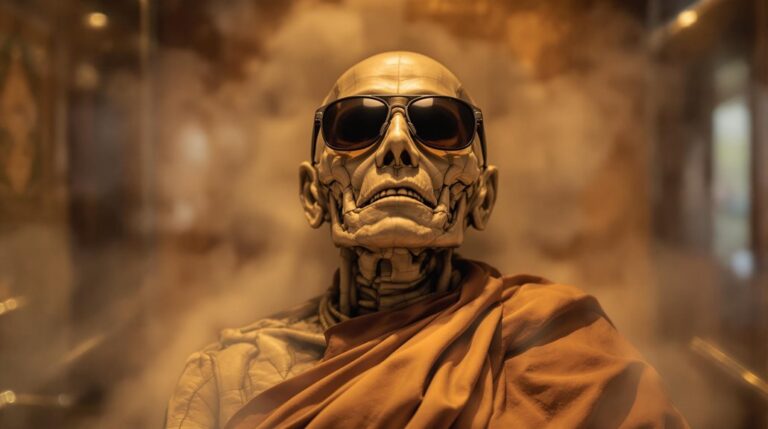Yasuke: The Astonishing Story of Japan’s Black Samurai
You've probably heard tales of samurai warriors, but you likely don't know about Yasuke, the African warrior who rose to become Japan's first Black samurai. In the bustling world of 16th-century feudal Japan, where outsiders were rare and social mobility even rarer, this former slave carved an extraordinary path into the inner circle of Japan's most powerful warlord. His journey from Mozambique to the elite ranks of Japanese society offers a fascinating glimpse into a lesser-known chapter of history.
A Stranger in a Strange Land: Yasuke's Journey to Japan
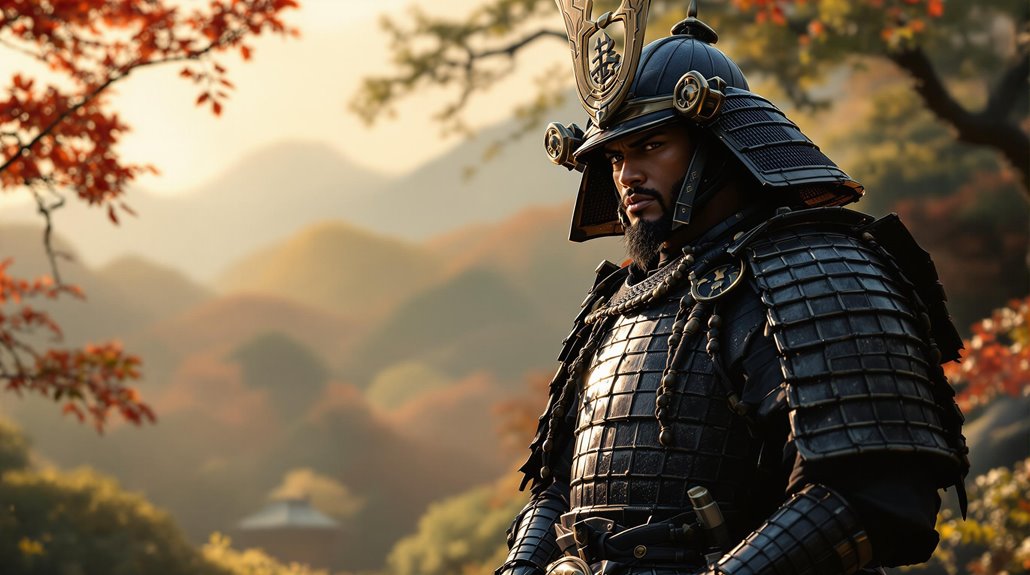
While the exact details of Yasuke's early life remain shrouded in mystery, historians believe he was born between 1530-1540 in Mozambique to the Makua people. His life took a dramatic turn when slave traders captured him and sold him in Goa, India, where he eventually found work with Jesuit missionaries.
The most significant cultural exchange of Yasuke's life began when he met Alessandro Valignano in 1574. As Valignano's bodyguard, he commenced an epic journey through Asia, traveling from Goa through Malaysia and Macao before reaching Japan in 1579. His remarkable journey would eventually lead to him becoming Nobunaga's court adviser.
Yasuke's arrival sparked unprecedented reactions, with his towering 6'2" frame and dark skin causing such commotion that buildings were damaged and lives were lost amid the chaos. His identity struggles were evident as locals initially believed his skin color was painted on. Oda Nobunaga was so impressed by Yasuke's character and abilities that he granted him samurai status, making him the first African to achieve this prestigious rank.
The Fateful Meeting With Oda Nobunaga
The most defining moment in Yasuke's Japanese journey came in 1581 when his presence caught the attention of Japan's most powerful warlord, Oda Nobunaga.
When word spread of a black-skinned foreigner who could speak Japanese, thousands of curious onlookers stormed Kyoto's Jesuit church, with some even losing their lives in the chaos.
Within the historical context of 16th-century Japan, cultural perceptions of Yasuke were shaped by Buddhist imagery depicting the Buddha with black skin.
Nobunaga, fascinated by this connection, demanded an immediate audience. After personally scrubbing Yasuke's skin to verify its authenticity, the warlord celebrated his arrival with a lavish party.
The two men developed a strong rapport, with frequent conversations between them becoming a regular occurrence at the court.
Recognizing Yasuke's unique value, Nobunaga granted him samurai status, complete with a residence in Azuchi Castle, servants, and the coveted position of weapon bearer. Standing at 188 centimeters tall, Yasuke's imposing physical presence made him particularly suited for his new role.
From Servant to Samurai: An Unprecedented Rise
Standing nearly two meters tall with exceptional physical strength, Yasuke's transformation from an enslaved African to Japan's first foreign-born samurai defied all social conventions of 16th-century Japan.
His rapid cultural assimilation and warrior identity caught Oda Nobunaga's attention, leading to an unprecedented rise in status.
You'll be amazed by Yasuke's remarkable achievements under Nobunaga's patronage:
- Received a private residence within Azuchi Castle's walls
- Earned a regular stipend as a retainer
- Carried a ceremonial katana, symbolizing his samurai status
- Commanded respect as Nobunaga's personal weapon bearer
His legendary strength, reportedly equal to ten men, proved invaluable in military campaigns.
Beyond physical prowess, Yasuke's mastery of Japanese language and customs solidified his unique position in samurai society.
When Yasuke first arrived in Kyoto, his striking appearance drew such immense crowds that several people were injured in dangerous trampling incidents.
Initially skeptical of his appearance, Nobunaga ordered servants to scrub his skin to verify if the black color was natural.
Life in the Inner Circle of Power
Ascending to Nobunaga's inner circle marked a remarkable chapter in Yasuke's journey, placing him among an elite group of 30-50 warriors who served Japan's most powerful daimyo.
As a trusted member of this exclusive group, you'd find Yasuke participating in daily samurai rituals, from attending diplomatic functions to dining with Nobunaga himself – a rare privilege that reflected the inner circle dynamics.
Standing at an impressive 6'2", he commanded attention wherever he went, drawing crowds fascinated by his unique presence. Understanding Japanese language enabled him to have meaningful discussions with Nobunaga during their time together.
Having arrived with Jesuit missionary Valignano, Yasuke's path to becoming a samurai was truly unprecedented.
Beyond his duties as Nobunaga's personal bodyguard, Yasuke's intelligence and "good disposition" earned him deep respect from the warlord.
The two developed such a close relationship that whispers circulated about Yasuke potentially being elevated to the status of tonō, showcasing how thoroughly he'd mastered both samurai customs and court politics.
The Tragic Fall of Nobunaga and Final Battle
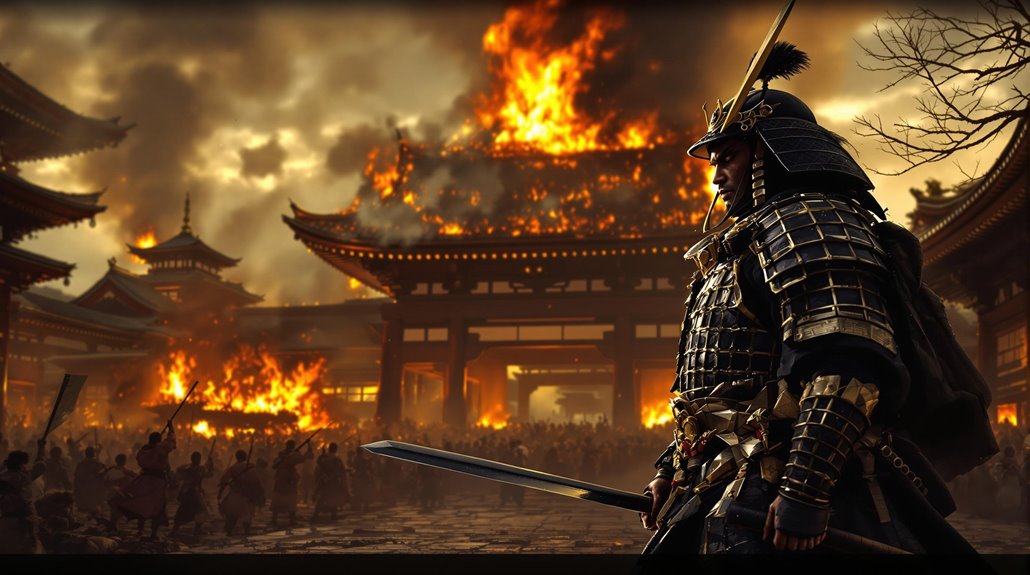
During the fateful morning of June 21, 1582, betrayal struck at Honnō-ji temple when Akechi Mitsuhide's 13,000 troops surrounded Nobunaga and his small band of loyal warriors.
Mitsuhide's forces approached the temple under the cover of following Nobunaga's orders, deceiving their own soldiers about the true target.
Like the battle at Nagashino and Shitaragahara, this would mark another pivotal moment in Japanese history.
Nobunaga's Betrayal by his trusted general would forever change Japan's destiny.
As arrows darkened the sky, Yasuke's Valor shone as he fought alongside his lord against overwhelming odds.
When Nobunaga was wounded in the elbow, he retreated to prepare for his final act.
 bodyguard to Valignano, Yasuke's journey from foreign arrival to trusted warrior exemplifies the rare instances of cultural integration in feudal Japan.
bodyguard to Valignano, Yasuke's journey from foreign arrival to trusted warrior exemplifies the rare instances of cultural integration in feudal Japan.
Today, Yasuke's historical representation continues to captivate audiences worldwide through award-winning literature, anime adaptations, and upcoming Hollywood productions.
He's become a powerful symbol of diversity in Japanese history, inspiring scholarly research that reexamines the presence of Africans in medieval Asia. His legacy has sparked important discussions about inclusion in modern Japan, while encouraging historians to explore the nation's forgotten international connections during the tumultuous Sengoku period.
You'll discover his impact growing stronger with each passing year.

